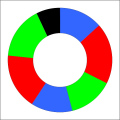
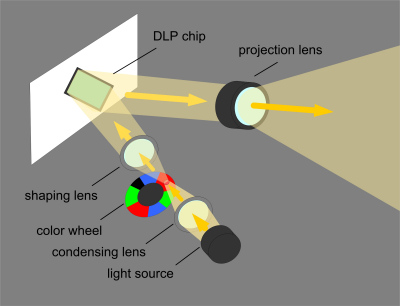
DLP projectors basic technology is an optical semiconductor with small hinge-mounted micromirrors that switch several thousand times per second. The chip was invented in 1987 by Texas Instruments. Each micromirror measures less than one-fifth of a human hair and is tilted toward the light source or away from it. The chip contains up to 2 million micromirrors in a rectangular array. Tilting the micromirror towards the light source causes a small light beam representing one single pixel. Though the optical system this single light beam is directed to the position of this pixel on the projection surface. The mirror itself is color neutral, the pixel's color is defined by the light reaching the micromirror. A micromirror illuminated by white light that is switched on more frequently than off creates a lighter gray pixel, a micromirror that is switched off more frequently creates a darker gray pixel. If the reaching light is colored, the resulting light beams are colored.
To create a color image, the white light reaching the DLP chip must be temoparily changed to color light. The white light is sent through a rotating color filter between the white light source and the DLP chip. This so-called color wheel filters the white light into red, green, and blue light, sometimes also into more additional colors like cyan, magenta and yellow.
 |  |
|
| typical color wheel | 1-chip DLP projection |
With the color wheel one single color is filtered after the other in a repeated order. It is turning fast enough to trick the human eye.
In a 3-chip DLP projection the white light is divided by a prism into the three basic colors red, green and blue. For each color an individual DLP chip is used, illuminated only by one of the three colors. The micromirrors of the three DLP chips are working individually for the three colors. The resulting light from the three chips is then combined again.
Projector lamps are decreasing in brightness over their life time. There are two definitions defined by projector manufacturers for the typical lamp life time:
1. The Lamp Life Time is the time at which 50% of a larger number of the same used lamps fail.
2. The Lamp Life Time is the time before the lamp is at half its original brightness.
Lamp life times are usually between 1000 and 3000 hours. With ECO mode normally lamps have a 30% to 60% extended life time. There is no guarantee how long a certain lamp will work before failure! Specified life time is always only an "up to" specification. Most projectors allow to check the lamp life time via the control interface. Dusty environments always shorten the lamp life time because of reduced cooling capabilities. Overheating is the most common reason for lamp failure. Air filters should be cleaned regularly. Projectors should be allowed to cool down before switches on again. Frequent off-on switching should be avoided. During the powering down procedure the projector should be always connected to power to ensure that the cooling fans work until they switch off automatically.
Projector lamp warranty is normally restricted to a certain number of hours lamp running time.
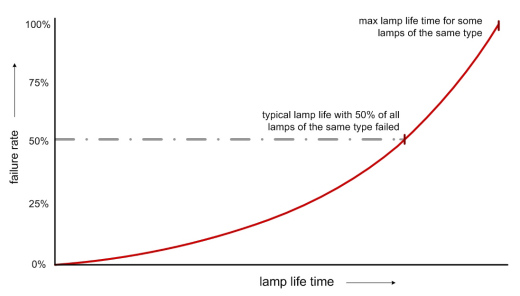 |
| typical projector lamp life time |
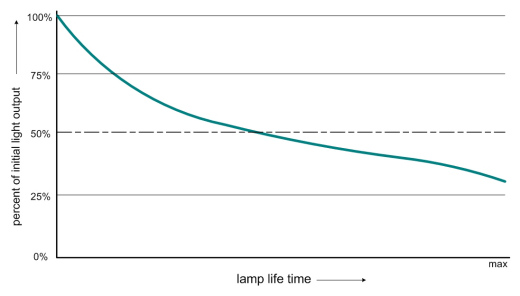 |
| typical projector lamp brightness versus life time |
Using keystone correction and warping always usable light output and usable resolution is increased. The higher the resolution the better both methods work because of smaller irregularities within the resulting image.
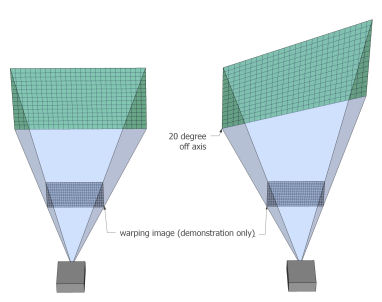 |
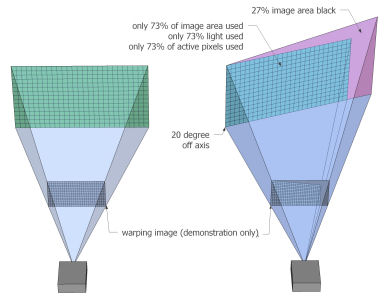 |
| projection on axis |
projection off axis using warping as correction tool, resulting in the same image size as with projection on axis, but over 25% of light output and resolution lost ! |